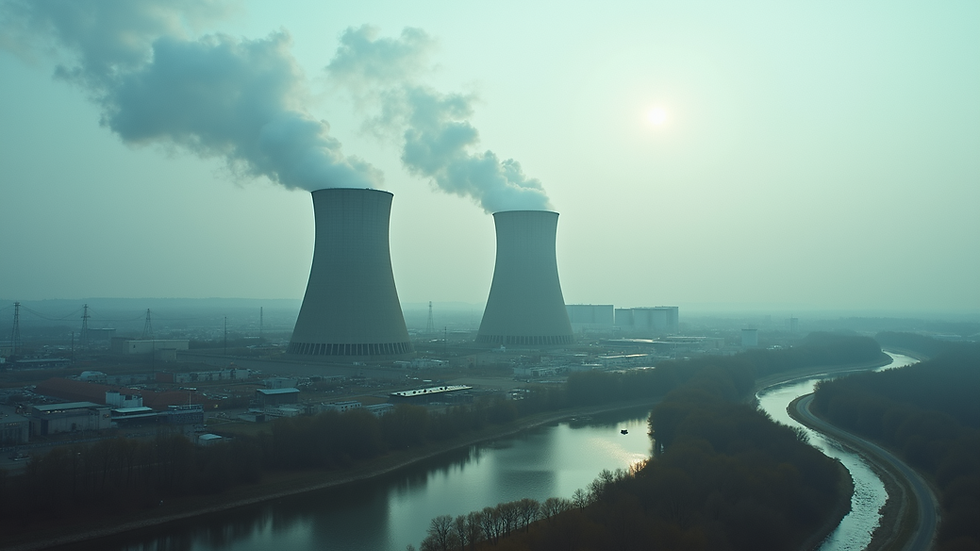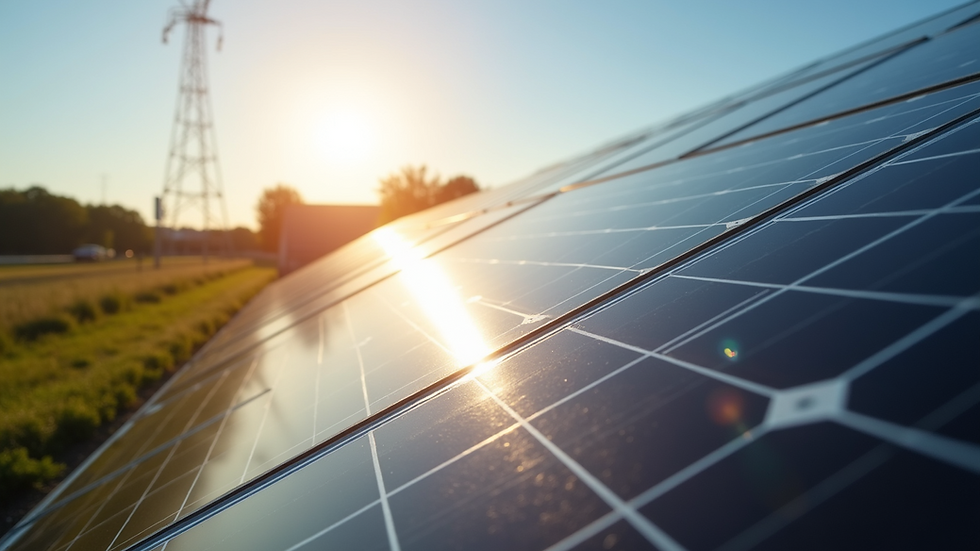How AI and Nuclear Power Are Reshaping Energy and Infrastructure Demands
- louai86alsam
- Jul 12
- 3 min read
As artificial intelligence grows at a rapid pace, the demand for energy—particularly from enormous data centers—is changing how we plan, conceptualize, and build future infrastructure. President Trump's recent executive directives aim to increase nuclear power production in response to the energy surge.
AI Needs Real Power - Nuclear Power
The AI boom has resulted in a significant increase in energy demand, with the United States' consumption anticipated to jump by 25% by 2030. Much of this need stems from the increasing growth of data centers, which power anything from smart cities to 3D rendering software. This puts further pressure on design experts to imagine energy-efficient environments and anticipate utility needs in all plans.
Nuclear Power Makes a Comeback
To alleviate the energy crisis, new nuclear power projects are being expedited. These executive directives streamline licensing, speed up development, and promote uranium mining and federal land use for reactors. Major players including as Google, Meta, and Amazon have vowed to treble nuclear power capacity by 2050, demonstrating how closely artificial intelligence and nuclear power are now intertwined.

Design and Rendering Teams Need to Plan Smarter
With the convergence of AI, data centers, and nuclear power, 3D rendering and architectural design must change. Planning for energy efficiency, grid access, and cooling systems is no longer optional; it is essential for future-proofing projects in the age of artificial intelligence.
Economic Implications of a Nuclear Renaissance
The potential economic benefits of revitalizing nuclear power are substantial. Executive directives are funneling financial incentives into nuclear projects, which have the potential to create tens of thousands of jobs in the high-tech and manufacturing sectors.
For example, every nuclear employment creates an average of 3.5 jobs in the nearby community, which can boost local economies, especially in locations near nuclear installations. Furthermore, as AI increases operating efficiencies, nuclear energy's long-term costs are predicted to fall, making it more competitive with alternative energy sources.

Public Perception and Future Trends
Despite the benefits highlighted in these executive directives, public opinion about nuclear power remains divided. Historical nuclear mishaps continue to influence views, overshadowing scientific advances in safety.
However, the integration of AI for real-time monitoring and risk assessment presents a unique chance to alter the discussion. Building trust requires clear and effective communication, as well as community engagement. As technology advances, so will the public's knowledge of nuclear energy's possibilities.
Outreach campaigns, for example, that highlight success stories and reliable safety records can assist close the awareness gap. To fully actualize a world in which nuclear power and AI are interwoven, constant education and public engagement activities are required.
A New Era for Energy Strategy
The presidential orders encouraging nuclear energy are a key step toward addressing the global energy dilemma, especially as artificial intelligence gets pace. By combining AI capabilities with nuclear technology, these programs aim to improve efficiency, safety, and sustainability.
As we continue to face the problems of energy production in an increasingly digital world, understanding the ramifications of these policies is critical to determining our energy environment.
The combination of executive directives and artificial intelligence is ushering in a nuclear renaissance, changing public image and economic outcomes in our pursuit of sustainable energy alternatives. Taking risks while reaping rewards will help guide this journey to a more energy-efficient future.





Comments